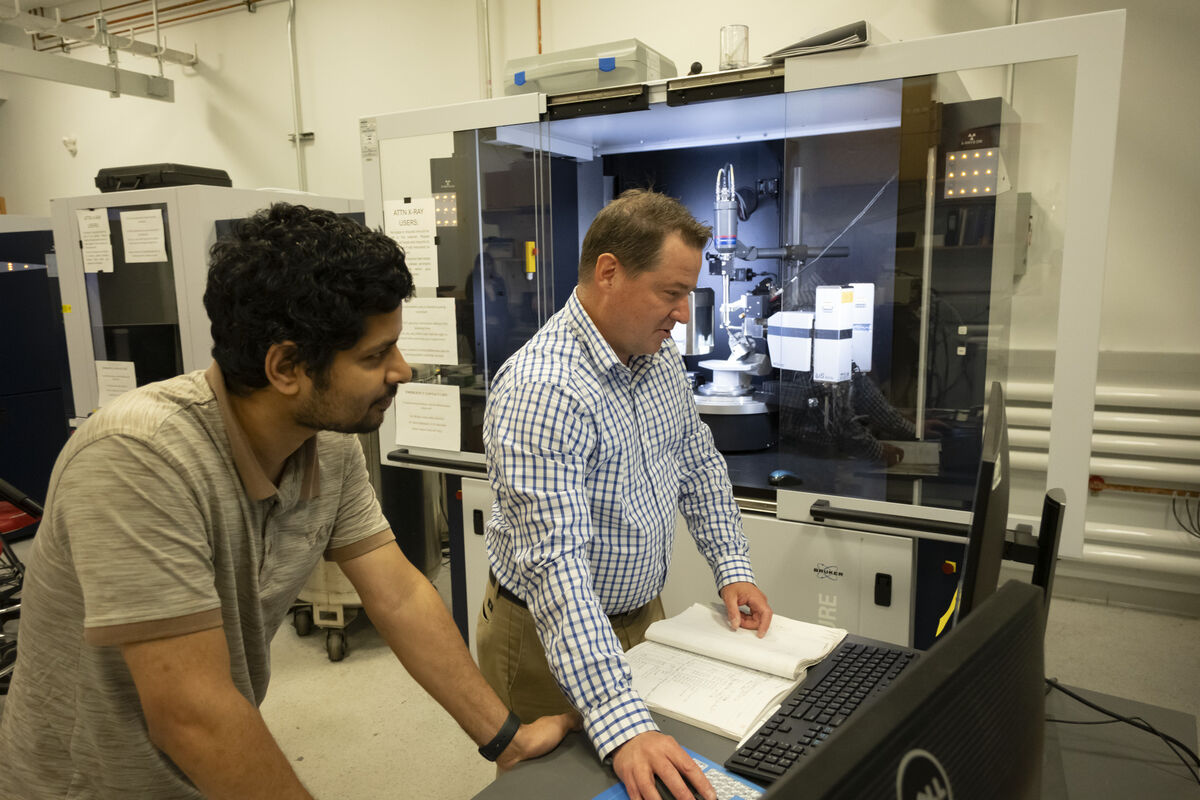Temple’s new cutting-edge microscope will advance region’s medical and energy research
A new award from the National Science Foundation will support a state-of-the-art three-beam correlative microscopy system, which will advance energy, biological, environmental and other materials research across the region.

Scanning electron microscopes (SEM), and their ability to help researchers visualize matter at the nanoscale, regularly contribute to groundbreaking innovations. Semiconductor and quantum technologies for computing, drug and cancer treatments, battery technology, and photovoltaic solar panels have all advanced through the use of electron microscopy.
Now, thanks to a $3.3 million award from the National Science Foundation (NSF), Temple University will soon own a brand new, state-of-the-art SEM-based platform. The instrument configuration will be one of just a few in the country, and only the second at a university. With its acquisition, Temple will make vital contributions to materials-based research for the foreseeable future.
“This award is a game changer, not just for Temple, but for the region,” said Vice President for Research Josh Gladden. “By making this powerful technology available to our research community and other collaborators in the area, we’re establishing Philadelphia as a hub for the next generation of materials science-driven innovation.”
Temple faculty, led by Michael Zdilla, professor of inorganic chemistry; Dmitriy Dikin, technical manager of Temple’s Nano Instrumentation Center; and Bernd Surrow, former senior associate dean for research at the College of Science and Technology, began meeting in 2024 to explore the acquisition of a new electron microscope.
The university is currently home to two electron microscopes, both housed in the Science Education and Research Center, but Dikin and Zdilla say the technology has undergone many innovations in recent years, and the timing was right to upgrade one of Temple’s instruments.
“We considered a new transmission electron microscope, but Drexel and Penn already have those. We also considered an X-ray photoelectron spectrometer, but Drexel and the University of Delaware have that,” said Zdilla, who is the principal investigator of the NSF award and led Temple’s proposal process. “This system does things that no one else in the country can do, unless you live near UC Santa Barbara, so a ton of faculty leapt at the opportunity to be a part of this proposal.”
The instrument doesn’t merely capture images of the microscopic world, Dikin and Zdilla explained. Rather, the instrument, which has been described as a Swiss Army knife of microscopy, can perform elemental and molecular mapping, etching, fabrication, cutting, and other complex functions.
The system can use laser and ion beams to drill into or strip away layers of any material, providing a three-dimensional image of a sample. It also uses X-ray technology to detect a sample’s elemental and structural composition, and it has an ion mass spectrometer, which can help researchers pinpoint where specific molecules are located in a sample.
“All of this information is condensed into a 3D, rotatable map showing where the elements and molecules are, down to the nanometer scale,” Zdilla said. “And this is all done on a chunk the size of a centimeter. It is absolutely unheard of to get that level of information from a centimeter-sized object, including molecular and elemental mapping.”

Michael Zdilla's lab works on problems at the interface of chemistry and energy science. He led Temple's NSF award proposal process. (Photography courtesy of Joseph V. Labolito)
Because of its versatility, the instrument has already attracted the attention of Temple researchers from a wide range of disciplines. One future user is Elham Sahraei, associate professor of mechanical engineering and director of Temple’s Electric Vehicle Safety Lab. As a co-principal investigator of the NSF award, Sahraei plans to use the system to advance her work related to battery safety.
Zdilla’s lab also works on batteries, including those that power electric vehicles. He hopes to use the new instrument to make advancements in the replacement of flammable liquid electrolytes found in batteries, which are usually responsible for battery fires.
Another co-principal investigator excited to use the instrument is Mehdi Khanzadeh, associate professor of civil and environmental engineering, whose research has led to sustainable advancements to concrete production.
Then there’s Santiago Orrego, associate professor from the Kornberg School of Dentistry, who works with smart materials and invented Ambrilux dental gel, an innovative gel that regenerates bone tissue lost to periodontal disease. Orrego is another co-principal investigator of the NSF award.
Temple’s award also includes funding for three years of training and support for the system, which Dikin and Zdilla say will help researchers and students launch new research projects.
Dikin added that the new system will be transformative for students at every level, from undergraduates and high school visitors to doctoral researchers. Even the mere observation of its operation, he said, reveals how many scientific and engineering challenges can be addressed with such an instrument.
“Training on this kind of platform gives students a much richer portfolio for their resumes and CVs,” said Dikin, who has used SEMs to conduct research out of the Nano Instrumentation Center for over a decade. “This is some of the most advanced technology in the field, and these skills are very in demand right now. Not many people know that this technology is used in forensic departments. It is used by most oil companies. It is used by high-end cosmetic companies, like L’Oréal. Hands-on users of this instrument will gain experience that will set them apart in their future research and industry careers.”
Zdilla emphasized that while the new instrument will drive research advances, it also supports Temple’s broader mission of educating the next generation of scientists.
“Our mission as a university is to train students, not to just get papers in the best journals, or to secure the most research funding,” Zdilla said. “Producing good science is important, but we also strive to produce good scientists by sharing this knowledge with the next generation.”
Temple’s proposal team is now working with vendors to finalize the specifications of the new instrument, which is expected to arrive on campus sometime in 2026.


